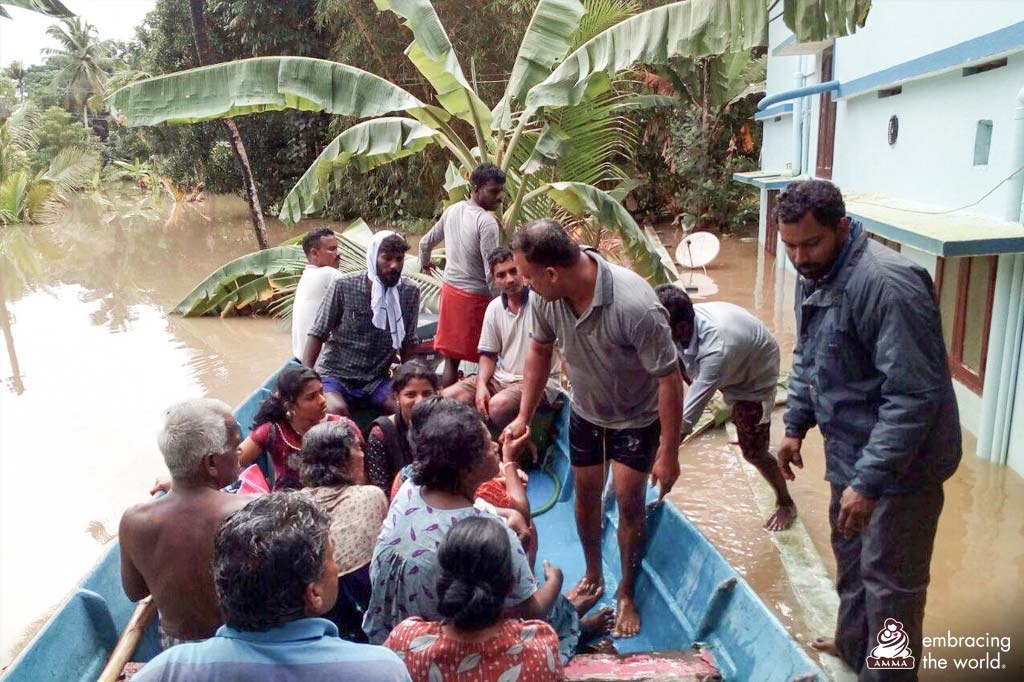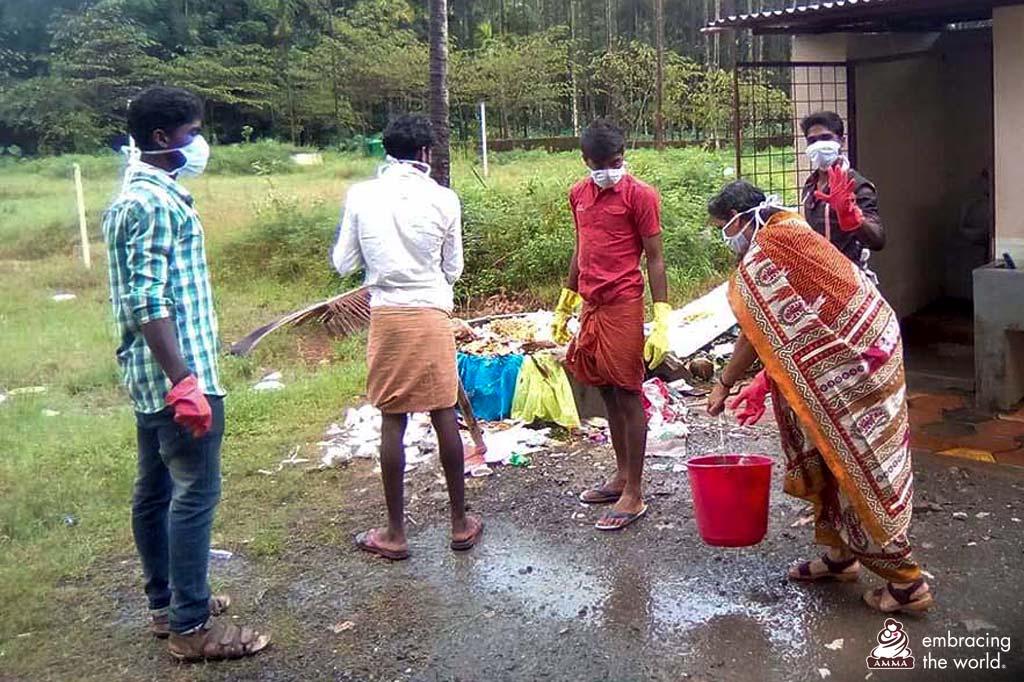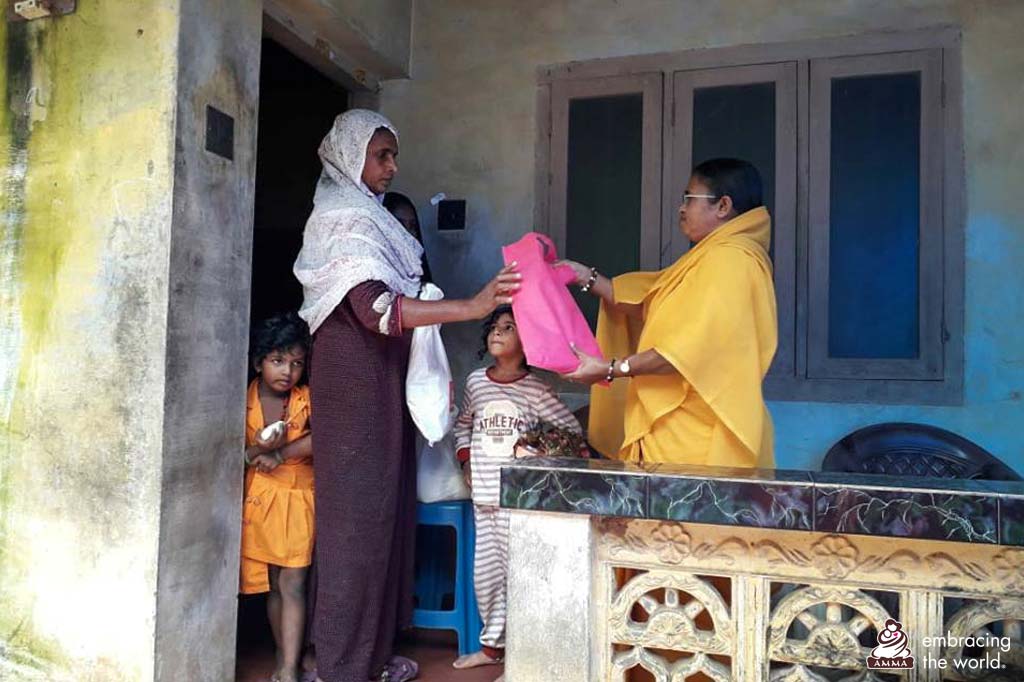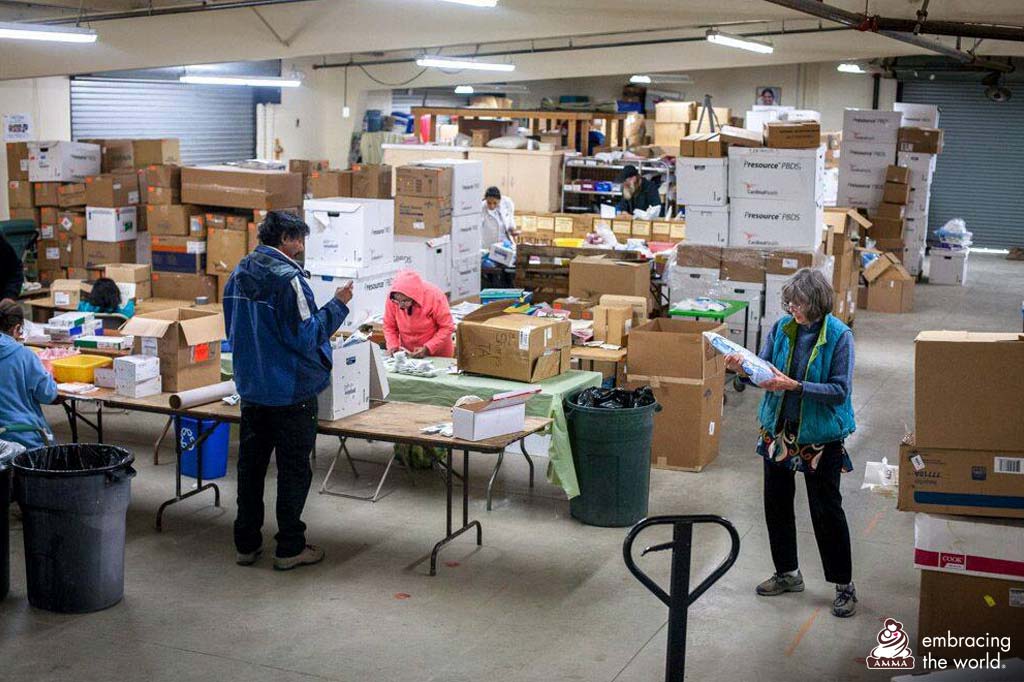August 23, 2018 - Kerala, India
“I saw thousands of families, with the same insecure feelings as me, sharing their losses,” explains Sreeni KR. Sreeni works with Amrita SeRVe, our village development project.
“In the camp I have seen the rich and the poor, the goldsmith and the blacksmith, the landowner and the laborer all together. Sharing the same food, shelter and clothes. I have watched the Christian brothers preparing food and serving it to Hindu and Muslim families. This is the beauty of India.”
Sreeni was on a train from Mumbai when the flood waters hit his home in Poolani, Meloor. It’s a small community of 2,500 families, about 75 kilometers north of Kerala’s largest city of Kochi and about 50 kilometers inland from the Arabian Sea.
While Sreeni travelled, he learned flood waters were reaching 15 meters and people were panicking and running to relief camps. But he could not reach his wife, daughter or other family members for many hours. Unimaginable stress.
Sreeni had to stop his travels at the nearest train station in the city of Coimbatore due to flooded roads. He finally got a hold of his family on the phone. They were alright. It took them two days to find shelter in a relief camp, and it took Sreeni another two days to be able to join them.
When Sreeni arrived at the camp of 4,000 displaced people, he was grateful to see members of various political parties, doctors, medical teams, and police all joining together to manage it very well. Most of the evacuees didn’t even have a change of dress. But the camp was able to provide sufficient food, supplies and clothes.
“When I reached the house the next morning and opened the door, the situation was more horrible than I had thought. Almost everything destroyed. The room is filled with silt, mud, tree branches, leaves and many types of snakes,” describes Sreeni.
“We will have to clean many more times before we move back in. All the wells are overflowing with plastic bottles and waste. We have a shortage of drinking water and food supplies. The loss is unbelievable. What my parents earned and saved over the last sixty years was all gone within seconds. But thank God for no human casualty and we are left with four structured walls and a roof.”
Sreeni’s situtation is one that thousands of people across Kerala will deal with over the coming days. As flood waters recede, it is now time to assess overall damages and begin cleanup and restoration.
More than 380 people have been counted in the death toll so far and about 1,100,000 people have been displaced from their homes and sheltered in more than 5,600 relief camps that run in schools, colleges, churches, madrassas and convention halls. The work includes the task of enforcing cleanliness to prevent water-borne illnesses such as typhoid, cholera and hepatitis-A. Buildings, infrastructure and farmlands across the state lay in ruin.
Embracing the World volunteers continue to take part in the efforts. Relief camps in 30 of our 40 Amrita Vidyalayam schools remain in operation, and teams have already begun to disperse into communities to help with initial cleanup. Donations of food, water and essential supplies are being sorted and sent to those in need.
In fact, a tremendous donation of medical supplies arrived with the MA Center in San Ramon, California, US. Volunteers are gathering to sort, count and pack the items for shipment to India.
Despite the fact the flood waters hit the ground floor at Amrita Institute of Medical Sciences and Research (Amrita Hospital), they were cleared within a day and vital treatment remained without interruption. The remote medical units that have been traveling to isolated areas since the outset of the floods also continue their work.
The AYUDH Amritapuri 24-hour emergency call center at Amrita Vishwa Vidyapeetham has received 25,000 calls that led to the rescue and aid of more than 100,000 people. The calls were confirmed by volunteers and then sent to the multi-faceted rescue teams of government officials, Navy, Air Force, Coast Guard, National Disaster Response Force, Army, the police, local fishermen and other volunteering agencies. The center remains in operation. In fact, a team at Amrita Center for Wireless Networks & Applications developed a specialized app to manage the distress calls.
“I can speak for all of the volunteers when I say that we are ecstatic to be able to help in this small way,” said AYUDH Coordinator Amritesh. “We got a lot of positive feedback from the Indian Air Force and Navy, telling us that the information collected through the Amrita Helpline has helped them to better target their rescue and relief operations and to follow through with greater speed.”
As flood evaluation evolves, restructuring teams for overall community rebuilding now prepare for the long journey ahead.









